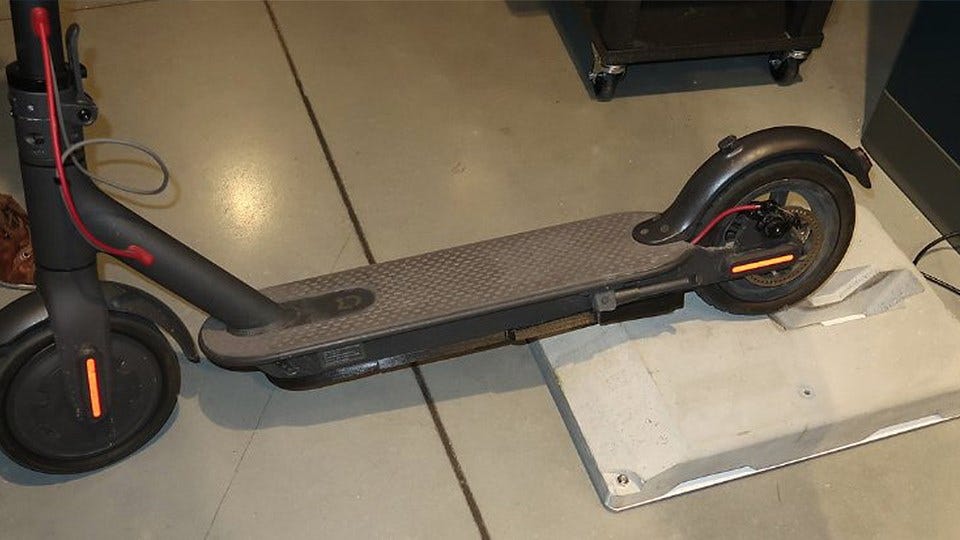Purdue Partnership Studying the Future of Electric Vehicle Charging
 The technology involves charging scooters wirelessly through specially-designed concrete. (Provided Photo/Darcy Bullock)
The technology involves charging scooters wirelessly through specially-designed concrete. (Provided Photo/Darcy Bullock)
Subscriber Benefit
As a subscriber you can listen to articles at work, in the car, or while you work out. Subscribe NowThe director of the Joint Transportation Research Program at Purdue University says a recently-announced partnership between Purdue and Germany-based Magment Concrete Wireless Power aims to address future electric vehicle charging needs. The partners will be working on several electric transportation pilots, including the development of wireless charging technology for electric scooters. Darcy Bullock, who is also a professor of civil engineering at Purdue, says with the expected increase in electric vehicles on the road, researchers are thinking about preparing the country’s infrastructure for that growth.
Bullock says the partnership is focusing on smaller forms of transportation to see how the technology can be applied for larger vehicles.
“The long-term vision is identifying the most effective way to electrify our highway infrastructure,” said Bullock. “But in the near term, they often say ‘fail early, fail fast,’ we want to learn our lessons at a small scale. So the thing that we’re intrigued by with this early partnership with Magment is trying this out with electric scooters.”
The university says Magment is developing a magnetized form of cement that has the ability to repower electric vehicles more efficiently than traditional charging systems. Bullock says they are looking to find a way to come up with an on-street deployment and testing system for the technology, which could bring its own benefits.
“If you look at, right now, people driving around, picking up scooters in fossil fuel vehicles, driving them off, charging them, and then driving them back out, there’s a huge amount of emissions just on that, whereas if they were parking it in designated spots and they were charging overnight, we wouldn’t have that. The other area is, it provides a little more structure to where the scooters park on the street so we don’t end up with quite so much urban clutter on the sidewalk.”
Bullock says the technology works in the same way as a person would wirelessly charge their mobile device, but on a larger scale. He says the next step is to go from a lab prototype of the cement technology to deployment on a campus or city street with scooters that are equipped with the wireless charging technology.
“Ultimately, the challenge is going to be this is a new type of concrete,” said Bullock. “Is it durable in the environment? Does the charging work in the field under all weather conditions the same as we expect it to do based on lab experiments? Many, many times it’s when you go to the field with the product, that’s when you learn some valuable lessons on how you can improve and tweak the technology.”
Bullock says right now, the partners are looking for an agency that would want to deploy the technology and a scooter provider that would be willing to fit their scooters with charging plates.
The testing is being done at Purdue’s Discovery Park district. Purdue Research Foundation Chief Innovation and Collaboration Officer David Broecker says the district was established to serve as a test bed for new technologies. “The Magment collaboration enables Purdue to be one of the first places to work with this highly innovative technology,” he said in a news release.
The partners eventually hope to test the technology on other forms of transportation, including autonomous electric utility vehicle equipment and robotic shop floor delivery systems.
Bullock says the partnership is focusing on smaller forms of transportation to see how the technology can be applied for larger vehicles.
Bullock explains the challenges and next steps for the research.
